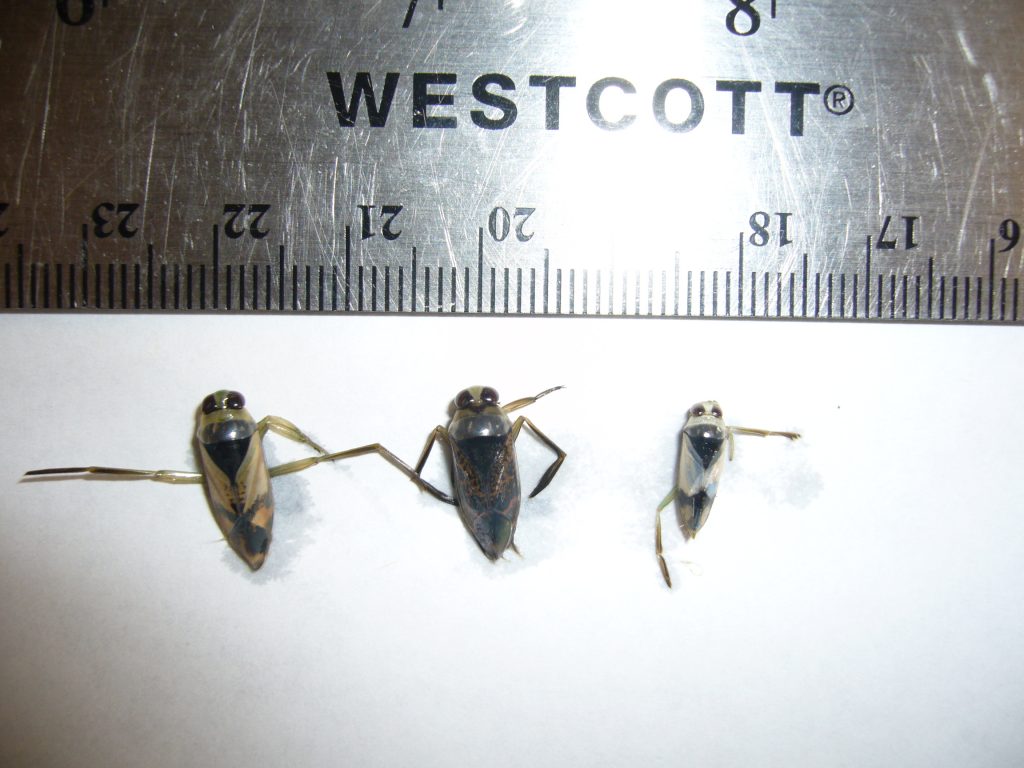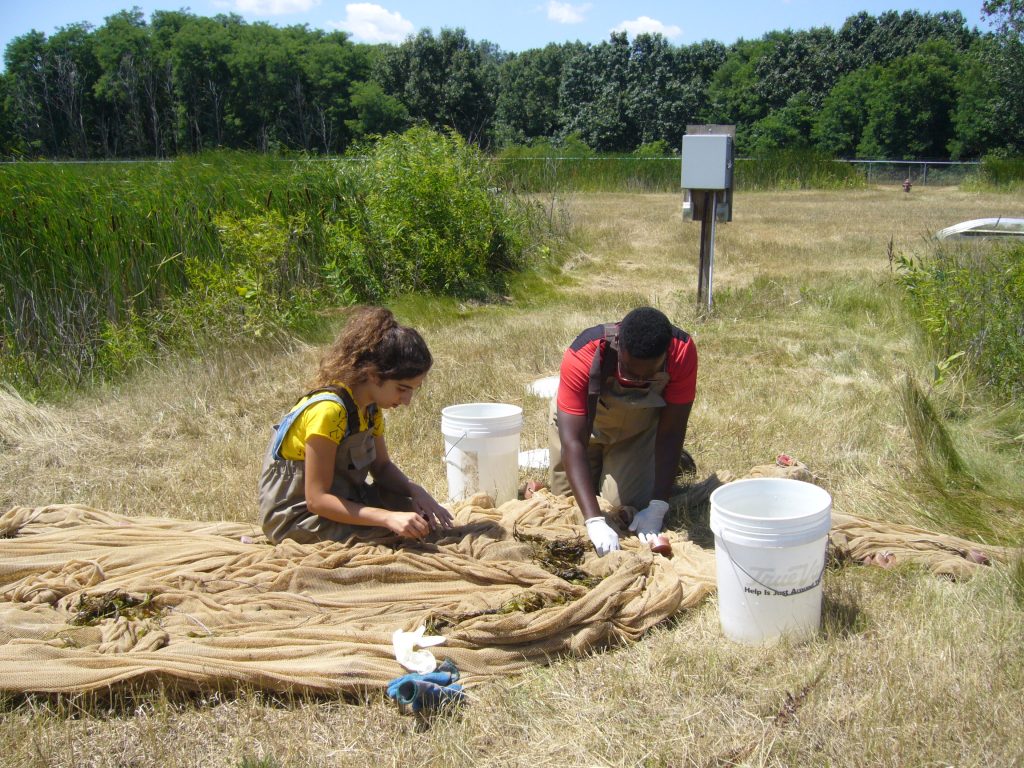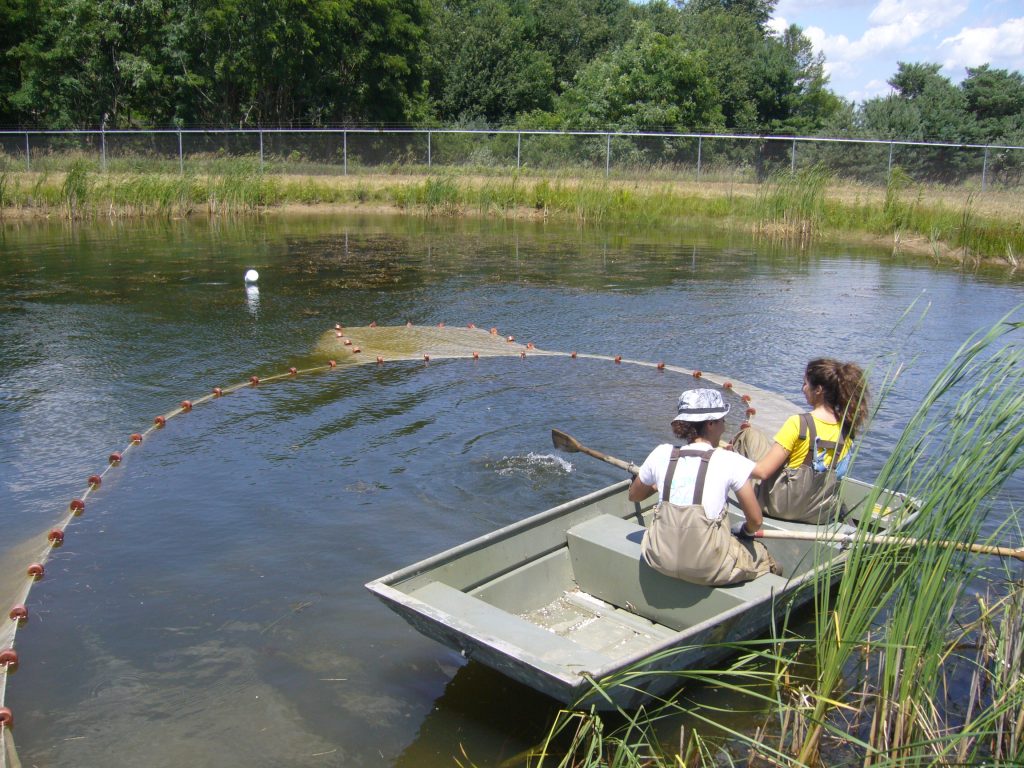I have always been torn between deciding on looking at the world with a scientist’s mind or with an artist’s eye. But through my experience as an REU at Kellogg Biological Station, I have realized how beneficial it is to create a mutualistic relationship between these two disciplines and to use them hand in hand. Without being able to come up with creative solutions, many scientific questions I have asked would have been left unanswered.
Simple things like how to create mesocosms for the organism that I study, Notonectidae, that mimic the pond environments that they are from, would have been unattainable had I not come up with clever ways to recreate these habitats. Similarly, without always being inquisitive and curious about how the natural world functions, I would have been unable to manipulate various variables to discover answers about why this organism has been naturally selected to behave a certain way.
For 11 weeks, I looked at why two species of aquatic insects, Notonecta irrorata and Notonecta undulata, have very peculiar spatial distributions in Southwest Michigan. In the fishless ponds we survey at Lux Arbor, some ponds are only one species dominant, while other ponds have heterogeneous spatial distribution. To answer this unsolved mystery, we have been looking for the specific connecting threads between Notonecta species and all the factors in its habitat, such as predator-prey interactions, habitat complexity, and water quality.
Previous studies have shown that these insects are cannibalistic, which affects juvenile survival rates and behavior, causing us to predict that there likely is an effect of interspecific predation from adults of one species to juveniles of the other species. Our hypothesis was that Notonecta irrorata adults may have a stronger negative effect on the survival of Notonecta undulata juveniles compared to Notonecta undulata adults on Notonecta irrorata juveniles.

Left: Notonecta irrorata adults (length 13.1-14.5 mm), Right: Notonecta undulata adult (length 10.9-12.3 mm)
We predicted this because we observed that the size of Notonecta irrorata is larger than Notonecta undulata (shown at right) and this may cause them to be more aggressive. We also predicted that interspecific predation will alter juvenile behavior by causing them to seek refuge more below the water column and in the edges of the mesocosms. We also hypothesized that habitat complexity through dense vegetation will increase survival rates because juveniles will use the vegetation as a refuge to hide from predation.
After conducting our mesocosm experiments, we discovered that most of our major hypotheses were not upheld! We found that juvenile behavior did alter in the presence of interspecific predation in the way we predicted, but found that Notonecta undulata adults actually impacted Notonecta irrorata juvenile behavior significantly, while Notonecta irrorata adults did not affect Notonecta undulata juvenile behavior.
We also found that vegetation had no effect on survival rates for either juvenile species. By obtaining some findings that disproved what we had predicted, I realized how important it is to have a flexible and patient mind that is able to intensify one’s vision to look at new possibilities.
The most everlasting aspect of my experience as a researcher at Kellogg Biological Station is the harmony that grew from within myself. Being in tune and resonating with all the surrounding life allowed me to connect all my inner fragments and become whole.
I discovered more about myself everyday by breathing in freshly photosynthesized air from the embracing flora, observing life from the perspective of the Notonectidae I studied, and elevating my understanding as an organism on this magical planet. My experience as an ecologist this summer connected the scientist and the artist within me and created a much more unified and better self.
I now live on by the quote from Edward O. Wilson’s book Biophilia: “The role of science, like that of art, is to blend exact imagery with more distant meaning, the parts we already understand with those given as new into larger patterns that are coherent enough to be acceptable as truth. The biologist knows this relation by intuition during the course of fieldwork, as [the biologist] struggles to make order out of the infinitely varying patterns of nature.” I have discovered passion in the study of the natural world, and will use this excitement to fully embody my niche as a researcher of flora and fauna.
Bana Kabalan is a senior at Wayne State University studying Biology, and participated in the Research Experiences for Undergraduates program at KBS during the summer 2016 session. She was mentored by Dr. Chris Steiner, a KBS alumnus who is now an Associate Professor at Wayne State.



A legacy of conservation; a commitment to sustainability.
3700 E. Gull Lake Drive
Hickory Corners, MI 49060
(269) 671-5117
info@kbs.msu.edu